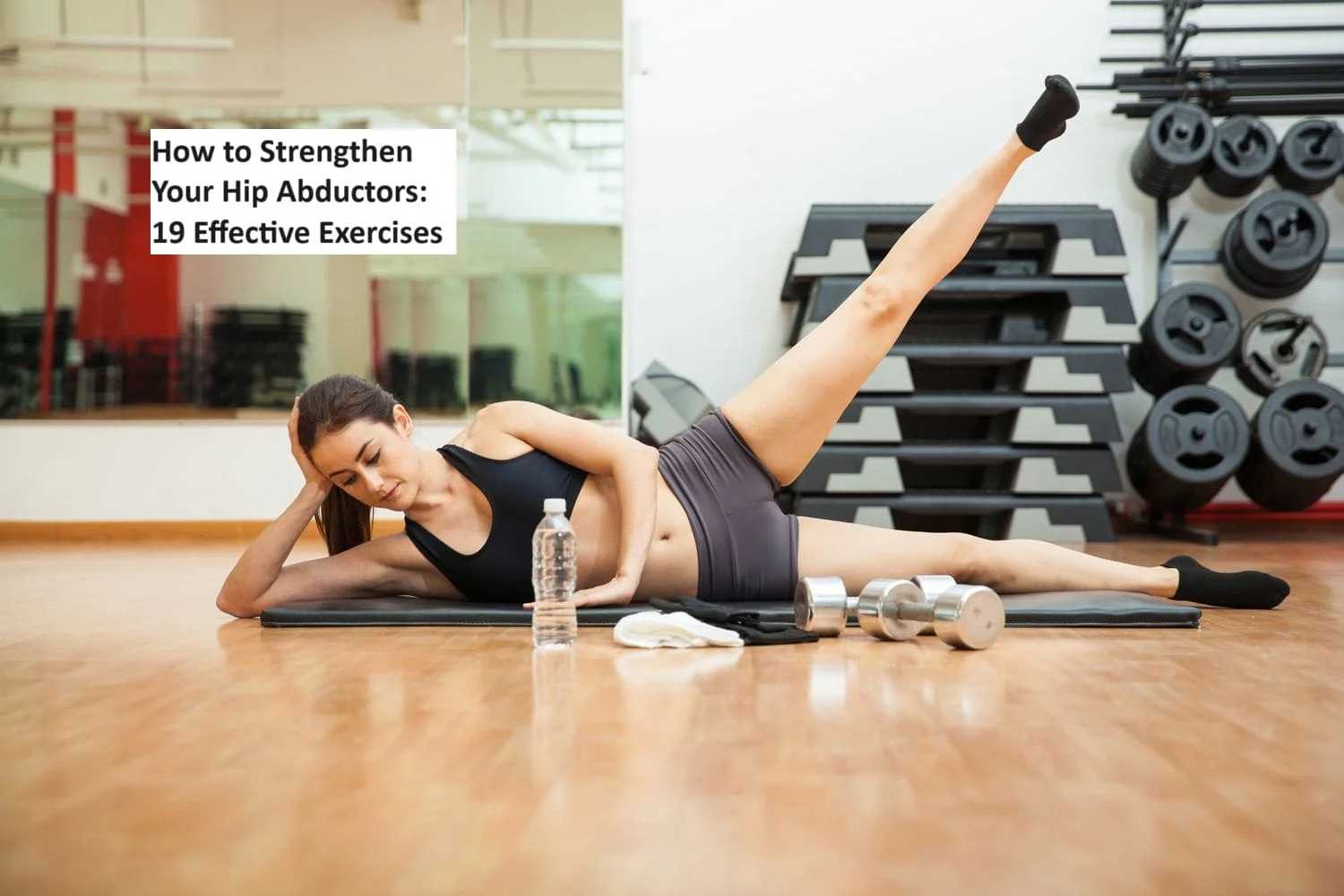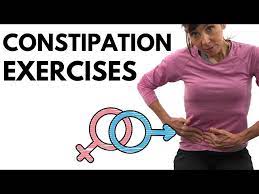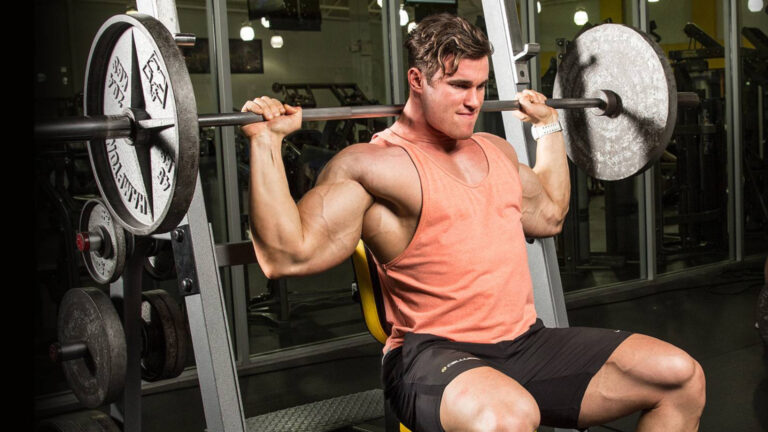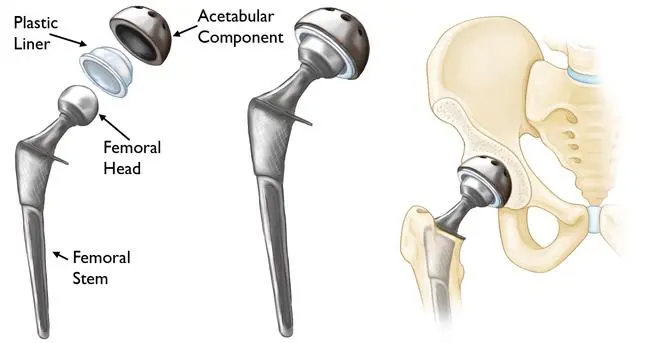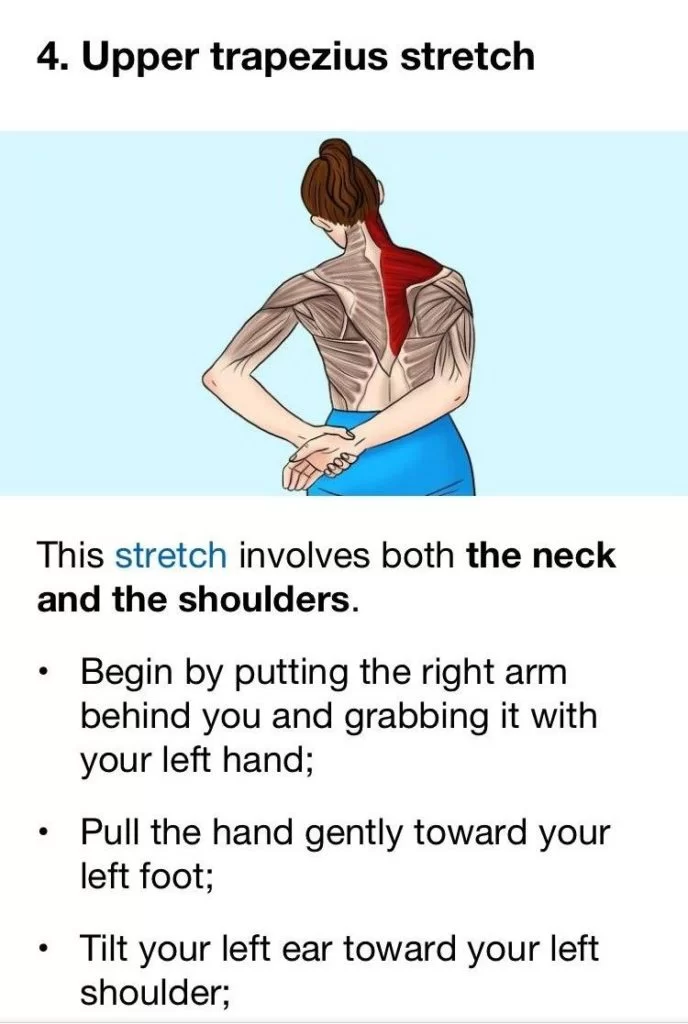How to Strengthen Your Hip Abductors: 19 Effective Exercises
Hip abductors are a group of muscles located on the sides of your hips, primarily the gluteus medius and gluteus minimus. These muscles are responsible for moving your thigh away from the center of your body, a movement known as hip abduction.
Strengthening your hip abductors is important for maintaining proper hip function, stability, and preventing injuries, especially in activities that involve lateral movements, such as running, dancing, or playing sports. In this exercise introduction, we’ll explore various exercises designed to target and strengthen your hip abductors, helping you improve your overall lower body strength and stability.
What is the Hip Abductor Muscle?
The hip abductors are a set of muscle tissues placed inside the hip place that might be responsible for transferring the leg far away from the body’s midline. The number one hip abductor muscle includes the gluteus medius, gluteus minimus, and tensor fasciae latae.
The gluteus medius muscle is a vast, fan-shaped muscle that originates from the outer surface of the ilium (hip bone) and inserts into the greater trochanter of the femur (thigh bone). It is accountable for hip abduction and performs a role in hip stabilization for the duration of strolling and walking.
The gluteus minimus muscle is a smaller muscle located deep into the gluteus medius. It originates from the outer surface of the ilium and inserts into the greater trochanter of the femur. Like the gluteus medius, it is liable for hip abduction and stabilization.
The tensor fasciae latae muscle is a small muscle placed at the lateral issue of the hip. It originates from the iliac crest (the uppermost part of the hip bone) and inserts into the iliotibial band (a thick band of connective tissue that runs down the outdoor of the thigh). It is responsible for hip abduction and additionally performs a role in hip flexion and internal rotation.
Together, those muscular tissues stabilize the pelvis during weight-bearing sports, including walking, running, and jumping. They additionally help to hold the proper alignment of the lower extremities throughout those activities, which can help to prevent accidents to the knees, hips, and lower back. Strengthening exercises for the hip abductors are regularly prescribed as a part of rehabilitation programs for people with lower extremity injuries or imbalances.
Hip abductor exercise
The fire hydrant exercise
The fire hydrant exercise is a popular exercise that targets the hip abductor muscles. To perform this exercise:
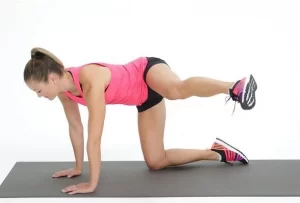
- Start with your hands and knees with your hands directly beneath your shoulders and your knees directly beneath your hips.
- Keeping your knee bent, lift one leg out to the side, keeping your foot flexed and your knee at a 90-degree angle.
- Lift your leg as high as you can without rotating your hips or leaning to one side.
- Maintain for a few seconds at the top of the movement, then gradually lower your leg back down to the initiate position.
- Repeat on the other side, completing 10-15 repetitions on each side.
Variations:
Add resistance by placing a small resistance band around your thighs, just above your knees.
Increase the range of motion by lifting your leg diagonally back behind you, rather than straight out to the side.
Hip Abduction with Cable
Hip abduction with cable is an exercise that targets the hip abductor muscles using a cable machine. To perform this exercise:
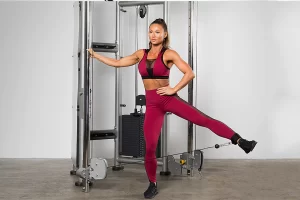
- Attach an ankle strap to the low pulley of a cable machine and attach it to your ankle.
- Stand with your side facing the machine and your feet shoulder-width apart.
- Hold onto the machine with one hand for support.
- Keeping your knee straight, lift your leg out to the side as high as you can, keeping your foot flexed.
- Maintain for a few seconds at the top of the movement, then gradually lower your leg back down to the initiate position.
- Repeat on the other side, completing 10-15 repetitions on each side.
Variations:
Increase the weight on the cable machine to add resistance.
Use a resistance band instead of a cable machine by attaching it to a sturdy object and looping it around your ankle.
Leg Out Side Circles
Leg Out Side Circles is another exercise that targets the hip abductor muscles. To perform this exercise:
- Lie on your side and your legs should be straight and stacked on top of each other.
- Prop yourself up on your elbow in order to give support.
- Keeping your top leg straight, lift it up as high as you can while keeping your foot flexed.
- Begin to move your leg in a circular motion, making small circles with your foot.
- Continue circling your leg for 10-15 repetitions in one direction, then switch directions and repeat on the other side.
Variations:
Increase the intensity by adding ankle weights or a resistance band around your thighs.
Perform the exercise standing up with a resistance band around your ankles.
Combine leg outside circles with other hip abductor exercises for a complete workout.
Side Lunge (Weight Optional)
Side Lunge is an exercise that targets the hip abductor muscles, as well as the glutes and quads. To perform this exercise:
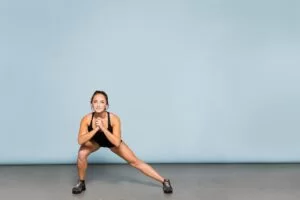
- You should stand with your feet shoulder-width away and your hands should be placed on your hips. If using weights, hold them in each hand at your sides.
- Take a large step to the side with your right foot, keeping your left foot planted on the ground.
- Bend your right knee and lower your body down into a lunge position, maintaining your left leg straight.
- Push off with your right foot to get back to the initiate position.
- Repeat for 10-15 repetitions on one side, then switch sides and repeat.
Variations:
Increase the intensity by holding heavier weights or adding a resistance band around your thighs.
Add a twist at the end of each lunge, rotating your torso toward the side you’re lunging on.
Combine Side Lunges with other hip abductor exercises for a complete workout.
Leg Out Side Kickouts
Leg Out Side Kickouts is an exercise that targets the hip abductor muscles, which are responsible for moving your leg away from your body. To perform this exercise:
- Lie on your side and your legs should be straight and stacked on top of each other. Prop your upper body up on your elbow or hand.
- Lift your top leg up as high as you can while keeping it straight.
- Gradually lower your leg back down to the initiate position.
- Repeat for 10-15 repetitions on one side, then switch sides and repeat.
Variations:
Increase the intensity by adding ankle weights or a resistance band around your thighs.
Hold the lifted position for a few seconds before lowering your leg back down.
Combine leg outside kickouts with other hip abductor exercises for a complete workout.
One-Legged Hip Thrust
The One-Legged Hip Thrust is an exercise that targets the hip abductor muscles, as well as the glutes and hamstrings. To perform this exercise:
- Sit on the ground with your back against a bench or step, and your knees bent and feet flat on the ground.
- Raise one leg off the surface and extend it straight out in front of you.
- Place your hands on the bench or step behind you for support.
- Drive your heel into the ground and lift your hips up towards the ceiling, squeezing your glutes and hamstrings.
- Gradually lower your buttocks back down to the initiate position.
- Repeat for 10-15 repetitions on one side, then switch sides and repeat.
Variations:
Raising the intensity by adding a resistance band surrounding your thighs.
Hold the lifted position for a few seconds before lowering your hips back down.
Combine One-Legged Hip Thrusts with other hip abductor exercises for a complete workout.
Lying Hip Abductions
Lying Hip Abductions is an exercise that targets the hip abductor muscles, which are responsible for moving the legs away from the midline of the body. This exercise can help to improve hip stability and prevent injuries, as well as tone and strengthen the outer thighs.
To perform Lying Hip Abductions:
- Lie on your side and your legs should be straight and stacked on top of each other.
- Prop yourself up on your elbow, with your hand supporting your head.
- Engage your core muscles and raise your top leg up towards the ceiling, maintaining it straight.
- Maintain the raising position for several seconds, then lower your leg back down to the initiate position.
- Repeat for 10-15 repetitions on one side, then switch sides and repeat.
Variations:
Add ankle weights or a resistance band around your thighs to increase the intensity.
Hold the lifted position for a longer period of time to challenge your muscles.
Combine Lying Hip Abductions with other hip abductor exercises for a complete workout.
Curtsy Lunge
The Curtsy Lunge is an exercise that targets the hip abductor muscles, as well as the glutes and quads. This exercise involves a cross-behind movement that mimics a curtsy, hence the name.
To perform a Curtsy Lunge:
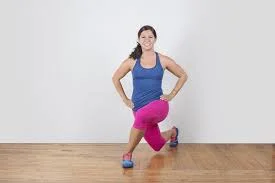
- Stand with your feet hip-width away and your hands should be on your hips.
- Take a step back and to the side with your right foot, crossing it at the back of your left foot. Your right knee should be bent and your left knee should be straight.
- Lower your body down towards the ground, keeping your chest up and your weight in your left heel.
- Push with your left heel to get back to the initiate position.
- Repeat for 10-15 repetitions on one side, then switch sides and repeat.
Variations:
Hold dumbbells or a kettlebell in each hand to increase the intensity.
Add a pulse at the bottom of the lunge to challenge your muscles.
Combine Curtsy Lunges with other hip abductor exercises for a complete workout.
Leg Out Side Pulses
Leg Out Side Pulses are an exercise that specifically targets the hip abductor muscles, which are located on the outer side of your hips. These muscles are responsible for moving your legs away from your body, and they play an important role in stabilizing your pelvis and keeping your knees aligned during movement.
To perform Leg Out Side Pulses:
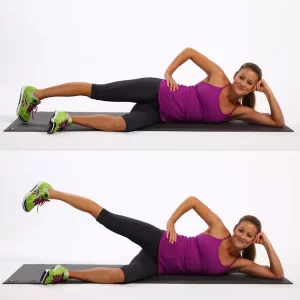
- Lie on your side with your legs straight and your bottom arm should be extended out in front of you in order to give support.
- Raise your top leg up towards the ceiling, maintaining it straight and in line with your body.
- Begin pulsing your leg up and down in a small range of motion, focusing on squeezing your hip abductor muscles with each pulse.
- Repeat for 10-15 repetitions on one side, then switch sides and repeat.
Variations:
Add ankle weights to increase the intensity.
Hold a resistance band around your ankles for added resistance.
Combine leg outside pulses with other hip abductor exercises for a complete workout.
Step Up with Leg Raise
The Step Up with Leg Raise exercise is a compound movement that targets the hip abductor muscles, as well as the glutes, quads, and core. It involves stepping up onto a raised platform while simultaneously lifting one leg out to the side, engaging the hip abductor muscles to stabilize the movement.
To perform Step Up with Leg Raise:
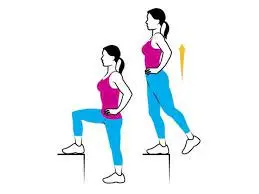
- Stand facing a raised platform, such as a step or bench, with your feet hip-width apart.
- Place one foot on the platform and shift your weight onto that foot.
- Push through your heel to lift yourself up onto the platform, straightening your leg and bringing your other foot up to meet it.
- As you lift yourself up, simultaneously lift your lifted leg out to the side, keeping it straight and in line with your body.
- Lower yourself back down to the starting position, stepping down with your lifted leg first.
- Repeat for 10-15 repetitions on one side, then switch sides and repeat.
Variations:
Add on weight by keeping dumbbells or a barbell across your shoulders.
Increase the height of the platform to increase the intensity.
Combine Step Up with Leg Raise with other hip abductor exercises for a complete workout.
Clamshell
The Clamshell exercise is a simple yet effective movement that targets the hip abductor muscles. It involves lying on your side with your knees bent and lifting your top knee up while keeping your feet together, engaging the hip abductor muscles to stabilize the movement.
To perform Clamshell:
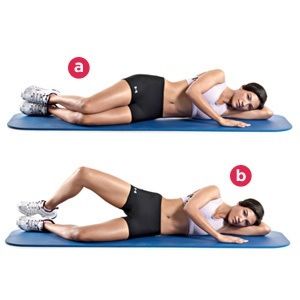
- Lie on your side with your legs bent at a 90-degree angle, and your head resting on your arm.
- Keep your feet together and lift your top knee up towards the ceiling, while keeping your heels touching.
- Maintain for several seconds, then lower your knee back down to the initiate position.
- Repeat for 10-15 repetitions on one side, then switch sides and repeat.
Variations:
Add on resistance by keeping a resistance band around your thighs, just over your knees.
Increase the intensity by lifting both legs off the ground and performing a double clamshell.
Combine Clamshell with other hip abductor exercises for a complete workout.
Resistance Band Side Walks
Resistance Band Side Walks are a great exercise for strengthening the hip abductor muscles, which are responsible for moving your legs away from the midline of your body. This exercise involves using a resistance band to create tension and resistance as you step sideways, engaging the hip abductors to control the movement.
To perform Resistance Band Side Walks:
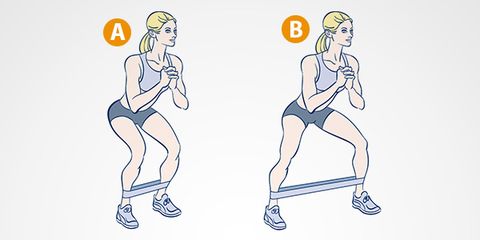
- Put a resistance band around your ankles and stand with your feet shoulder-width away.
- Take a small step to the side with one foot, keeping tension on the resistance band.
- Follow with the other foot, stepping sideways to bring your feet back to shoulder-width apart.
- Continue stepping sideways for 10-15 steps in one direction, then repeat in the opposite direction.
Variations:
Increase the intensity by using a heavier resistance band or adding ankle weights.
Change the direction of the movement by stepping forward and backward or diagonally.
Combine Resistance Band Side Walks with other hip abductor exercises for a complete workout.
Hip Drop
Hip Drop is an effective exercise for strengthening the hip abductor muscles, which are responsible for moving your legs away from the midline of your body. This exercise involves standing on one leg and dropping the opposite hip down towards the ground, engaging the hip abductors to control the movement.
To perform Hip Drop:
- Stand on one leg and your knee should be slightly bent and your foot firmly planted on the surface.
- Keep your core engaged and your hips level as you slowly drop your opposite hip down towards the ground.
- Use your hip abductor muscles to control the movement and prevent your knee from collapsing inward.
- Maintain for a few seconds, then Gradually get back to the initiate position.
- Repeat for 10-15 repetitions on one side, then switch to the other side.
Variations:
Increase the intensity by adding ankle weights or holding a dumbbell in your hand.
Change the direction of the movement by lifting your leg out to the side instead of dropping your hip down.
Combine Hip Drop with other hip abductor exercises for a complete workout.
Sitting hip abduction with resistance band
Sitting hip abduction with a resistance band is an effective exercise for strengthening the hip abductor muscles, which are responsible for moving your legs away from the midline of your body. This exercise involves sitting on a chair or bench and using a resistance band to add resistance to the movement.
To perform Sitting Hip Abduction with a Resistance Band:
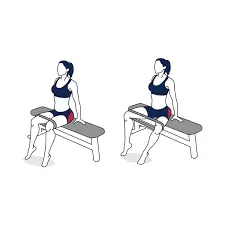
- Sit on a chair or bench and your back should be straight and your feet flat on the surface.
- Loop a resistance band around your knees and make sure it is securely in place.
- Keep your core engaged and your hips level as you slowly lift one leg out to the side, against the resistance of the band.
- Use your hip abductor muscles to control the movement and prevent your knee from collapsing inward.
- Maintain for a few seconds, then gradually lower your leg back down to the initiate position.
- Repeat for 10-15 repetitions on one side, then switch to the other side.
Variations:
Increase the intensity by using a stronger resistance band or adding ankle weights.
Change the direction of the movement by lifting your leg forward or backward instead of to the side.
Combine Sitting Hip Abduction with other hip abductor exercises for a complete workout.
Side plank hip abduction
Side plank hip abduction is an exercise that targets the hip abductor muscles, as well as the core and shoulder muscles. This exercise involves starting in a side plank position and then lifting the top leg up and down while maintaining stability in the plank.
To perform Side Plank Hip Abduction:
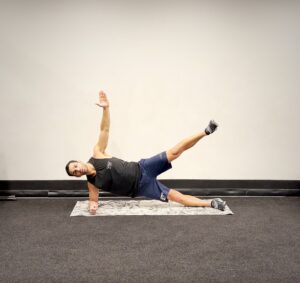
- Begin by lying on your side with your legs straight and your elbow directly underneath your shoulder.
- Raise your hips off the surface, maintaining your body in a straight line from head to toe.
- Place your top hand on your hip or extend it straight up towards the ceiling.
- Keep your core engaged and your hips level as you slowly lift your top leg up towards the ceiling.
- Use your hip abductor muscles to control the movement and prevent your leg from swinging forward or backward.
- Maintain for several seconds at the top of the movement, then gradually lower your leg back down to the initiate position.
- Repeat for 10-15 repetitions on one side, then switch to the other side.
Variations:
Increase the intensity by adding ankle weights or a resistance band around your thighs.
Change the direction of the movement by lifting your leg forward or backward instead of to the side.
Combine Side Plank Hip Abduction with other hip abductor exercises for a complete workout.
Glute Bridge With Abduction
The glute bridge with abduction is an exercise that targets the hip abductor muscles, as well as the glutes and core muscles. This exercise involves lying on your back with your knees bent and your feet flat on the ground, then lifting your hips up and out to the side while maintaining your core engaged and your hips level.
To perform Glute Bridge With Abduction:
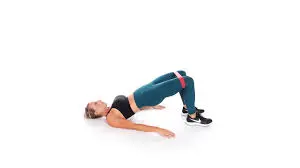
- Start by lying on your back with your knees bent and your feet flat on the surface.
- Put a resistance band around your thighs, just over your knees.
- Engage your core and glutes as you lift your hips up towards the ceiling, keeping your feet and shoulders firmly planted on the ground.
- Once you have lifted your hips as high as you can, slowly push your knees out to the side, against the resistance of the band.
- Maintain for a few seconds at the top of the movement, then gradually lower your hips back down to the initiate position.
- Repeat for 10-15 repetitions.
Variations:
Increase the intensity by using a heavier resistance band or adding ankle weights.
Change the direction of the movement by pushing your knees forward or backward instead of to the side.
Combine Glute Bridge With Abduction with other hip abductor exercises for a complete workout.
Hip abductors stretching
Standing hip abductor stretch
The standing hip abductor stretch is an exercise that targets the muscles on the outside of the hip, specifically the hip abductors. These muscles are used for moving the leg at a distance from the midline of the body.
To perform the standing hip abductor stretch, follow these steps:
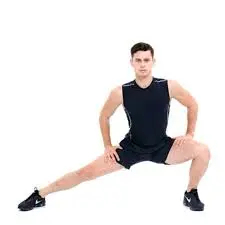
- Start by standing upright with your feet shoulder-width away. keeping good posture during the whole exercise, keeping your back straight and shoulders relaxed.
- Take a step to the side with your right foot, extending it outwards away from your body. Your right foot should be turned slightly outward to engage the hip abductors effectively.
- Shift your body weight onto your right foot, keeping your left foot firmly planted on the ground. You should feel a stretch on the inside of your left thigh.
- Slowly lean your upper body towards the right side, allowing your left arm to reach down towards your left ankle. This will intensify the stretch on the inside of your left thigh and hip abductors.
- Hold the stretch for 20-30 seconds while maintaining a steady breathing pattern. It’s important not to bounce or jerk during the stretch, as this can lead to injury.
- After holding the stretch, slowly return to an upright position by pushing off with your right foot and bringing your left foot back to its original position.
- Repeat the stretch on the other side by stepping to the side with your left foot and leaning towards the left side.
Remember, stretching should never cause pain. If you have any pre-existing injuries or medical conditions, it’s always best to consult with a healthcare professional before attempting any new exercises or stretches.
Seated butterfly stretch
The seated butterfly stretch is an exercise that targets the hip abductors, as well as the groin and inner thigh muscles. It helps to improve flexibility and range of motion in these areas. Here’s how to perform the seated butterfly stretch:

- Initiate by sitting on the ground with your legs should be extended in front of you. Sit up tall, maintain lengthening your spine, and engage your core muscles.
- Bend your knees and bring the soles of your feet together, allowing your knees to fall outwards towards the ground. Your feet should be as close to your body as possible, with your heels touching or close to touching.
- Use your hands to hold onto your ankles or feet, gently grasping them to help support the stretch.
- Take a deep breath in, and as you exhale, gradually lean forward from your hips, maintaining your back straight. Focus on leading with your chest and keeping your shoulders relaxed.
- Continue to lean forward until you feel a comfortable stretch in your inner thighs and groin area. Be mindful not to push yourself too far or force the stretch. It’s important to listen to your body and go only as far as you can without feeling pain.
- Once you’ve reached a comfortable stretch, hold the position for 20-30 seconds, breathing deeply and relaxing into the stretch.
- After holding the stretch, slowly release and sit back up, bringing your knees together and extending your legs back out in front of you.
Additional tips for performing the seated butterfly stretch:
- If you find it difficult to maintain an upright posture or keep your back straight, you can sit on a folded blanket or cushion to provide some support.
- To increase the intensity of the stretch, you can gently press down on your knees with your elbows or use your hands to apply gentle pressure on your thighs.
Incorporating the seated butterfly stretch into your regular stretching routine can help improve flexibility in your hip abductors and promote better overall hip mobility.
Lying hip abductor stretch
The lying hip abductor stretch is an exercise that targets the hip abductor muscles, which are responsible for moving your legs away from the midline of your body. This stretch helps to improve flexibility and range of motion in the hips, as well as strengthen and lengthen the hip abductors. Here’s how to perform the lying hip abductor stretch:
- Start by lying on your back on a comfortable surface, such as a yoga mat or exercise mat. Bend your knees and put your feet flat on the ground, hip-width away.
- Extend your arms out to the sides, palms facing down, for stability and support.
- Slowly slide one foot out to the side, keeping your knee bent. Your foot should be flat on the floor, and your knee should be pointing towards the ceiling.
- As you slide your foot out to the side, you should feel a stretch in the inner thigh and hip area of the leg that is extended. If you don’t feel a stretch, you can gently push your knee down towards the floor using your hand or a towel.
- Maintain this stretching for 20-30 seconds, take a deep breathing, and relax into the stretch. Be mindful not to push yourself too far or force the stretch. It’s important to listen to your body and go only as far as you can without feeling pain.
- After holding the stretch, slowly bring your leg back to the starting position, sliding it back in towards the midline of your body.
- Repeat the stretch on the other side, sliding the opposite leg out to the side and holding for 20-30 seconds.
Incorporating the lying hip abductor stretch into your regular stretching routine can help improve flexibility in your hip abductors and promote better overall hip mobility.
Pigeon pose stretch
The Pigeon pose is another effective stretch for targeting the hip abductor muscles. It helps to open up the hips, release tension, and increase flexibility in the hip abductors. Here are the steps on how to perform the Pigeon pose:

- Start by coming onto all fours on your mat, with your hands directly under your shoulders and your knees under your hips.
- Bring your right knee forward and place it behind your right wrist, angling your shin diagonally across your mat. Your right foot should be flexed, and your toes pointing towards your left hip.
- Slide your left leg backward, straightening it out the back side of you. Your left leg should be extended long, with the top of your foot resting on the mat.
- Adjust your hips so that they are squared towards the front of your mat. This means that both hip bones are facing forward, rather than twisting to one side.
- Slowly lower your upper body down towards the mat, coming into a forward fold over your right leg. You can rest your forearms on the mat in front of you, or if you have the flexibility, you can come all the way down onto your forearms or forehead.
- As you settle into the pose, focus on relaxing and releasing any tension in your hips and glutes. Breathe deeply and allow gravity to deepen the stretch.
- Hold the Pigeon pose for 1-3 minutes, or as long as feels comfortable for you. take in mind deep breathing and relax into the stretch.
- To come out of the pose, slowly press into your hands and lift your upper body back up. Then, tuck your back toes under and lift your back knee off the mat, returning to the starting position on all fours.
- Repeat the Pigeon pose on the other side, bringing your left knee forward and angling your left shin diagonally across your mat.
Incorporating the Pigeon pose into your regular stretching routine can help improve hip mobility, relieve tension, and promote better overall flexibility in the hip abductors.
Benefits of Hip Abductors Exercise
Hip abductor muscles are a group of muscles placed on the outside of the hip that are used for moving the leg away from the body. Here are some benefits of strengthening the hip abductor muscles:
- Improved balance and stability: Strong hip abductor muscles help to stabilize the pelvis and prevent it from tilting to one side. This can improve balance and stability during daily activities and sports.
- Reduced risk of injury: Weak hip abductor muscles can contribute to a variety of injuries, including IT band syndrome, knee pain, and lower back pain. Strengthening these muscles can help to reduce the risk of these injuries.
- Improved athletic performance: Many sports require strong hip abductor muscles, including running, jumping, and lateral movements. Strengthening these muscles can improve athletic performance in these activities.
- Better posture: Weak hip abductor muscles can contribute to poor posture and alignment. Strengthening these muscles can help to improve posture and reduce strain on the lower back.
- Reduced pain: Strengthening the hip abductor muscles can help alleviate pain in the hips, knees, and lower back by improving alignment and reducing strain on these areas.
Overall, strengthening the hip abductor muscles is important for maintaining proper alignment, reducing the risk of injury, and improving athletic performance. The glute bridge with abduction is one effective exercise for targeting these muscles.
How to make hip abductor exercise more challenging?
There are numerous approaches to make hip abductor sports more hard:
Increase resistance: Using resistance bands or weights can add more resistance to the exercise, making it more challenging for the hip abductor muscles. For example, adding ankle weights to a side-lying leg lift can increase the resistance and challenge the muscles.
Change the attitude: Changing the angle of the workout can target different parts of the hip abductor muscle tissues and make the exercise extra difficult. For example, appearing in a clamshell exercise with the legs extended can boost the issue.
Add instability: Adding instability to the workout can challenge the hip abductor muscular tissues and enhance stability and balance. For example, a performing plank with a leg lift can challenge the hip abductor muscular tissues whilst also engaging the center.
Increase repetitions or sets: Increasing the number of repetitions or units can challenge the hip abductor muscle tissue and enhance endurance. For example, acting more than one set of standing hip abduction exercises can increase the challenges.
Combine sporting events: Combining extraordinary hip abductor physical games can create a harder exercise and goal for multiple components of the muscular tissues. For example, combining a side-lying leg lift with a clamshell exercise can create extra challenging exercises for the hip abductor muscle tissues.
Overall, there are many approaches to make hip abductor exercises extra difficult, and it is essential to challenge the muscle groups to make progress and prevent plateauing.
Contraindications of the hip abductors
Contraindications for hip abductor exercises refer to situations where performing these exercises may be harmful or cause injury. Some common contraindications for hip abductor exercises include:
- Hip or knee injuries: If you have a history of hip or knee injuries, it’s important to avoid any exercises that may exacerbate the injury. Hip abductor exercises can put stress on the hip and knee joints, so it’s essential to avoid these exercises if you have any injuries in these areas.
- Osteoporosis: Individuals with osteoporosis should avoid high-impact exercises that put stress on the bones. Hip abductor exercises, which involve jumping or bouncing, can increase the risk of fractures in individuals with osteoporosis.
- Pregnancy: Pregnant women should avoid any exercises that put pressure on the abdomen or pelvic area. Hip abductor exercises can put pressure on the pelvic floor muscles, which can cause discomfort or injury during pregnancy.
- Herniated discs: If you have a herniated disc, it’s important to avoid exercises that put stress on the lower back. Hip abductor exercises can increase the pressure on the lower back, which can exacerbate the symptoms of a herniated disc.
- Joint replacement surgery: If you have undergone joint replacement surgery, it’s important to avoid any exercises that may damage the new joint. Hip abductor exercises can put stress on the hip joint, which can cause damage to a new joint replacement.
In conclusion, hip abductor exercises are beneficial for strengthening and toning the hip muscles, but they may not be suitable for everyone. It’s essential to consult with a healthcare provider before starting any exercise program, especially if you have any medical conditions or injuries that may contraindicate hip abductor exercises.
FAQ
What are hip abductor muscle tissues?
Hip abductor muscle groups are a set of muscle masses that can be accountable for shifting the leg far away from the body’s midline.
Why is it vital to exercise hip abductor muscular tissues?
Hip abductor muscular tissues play an important function in stabilizing the pelvis at some stage in motion and maintaining balance. Strengthening these muscle tissues can assist in preventing injuries and improve universal mobility.
What are a few exercises that focus on hip abductor muscle groups?
Some physical games that concentrate on hip abductor muscle tissue include clamshells, lateral band walks, side-lying leg lifts, and standing leg lifts.
How frequently should I do hip abductor exercises?
It is endorsed to do hip abductor physical activities at least 2-3 instances in line with the week, with a focal point on regularly growing intensity and resistance through the years.
Can hip abductor exercises assist with lower back ache?
Yes, strengthening the hip abductor muscle mass can assist in alleviating lower back pain with the aid of enhancing general balance and alignment of the pelvis and spine.

